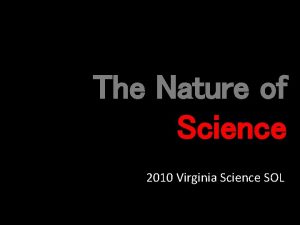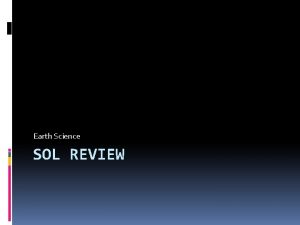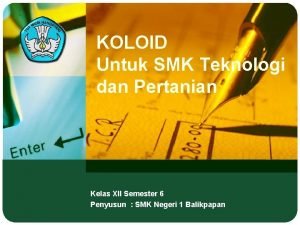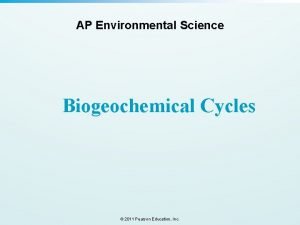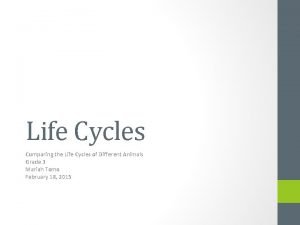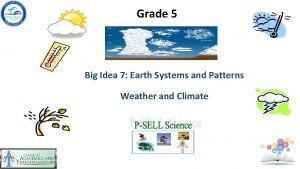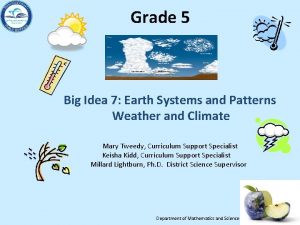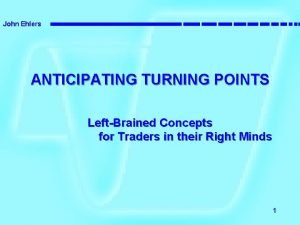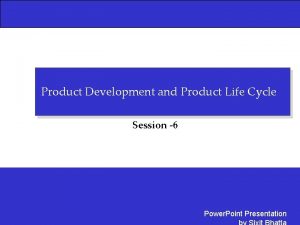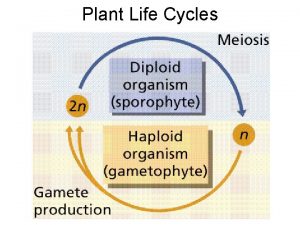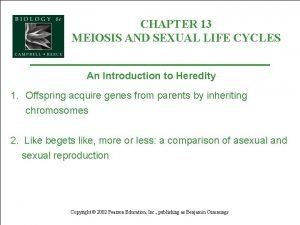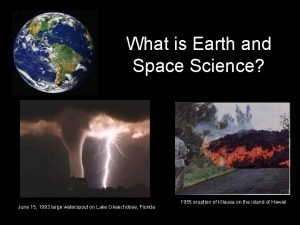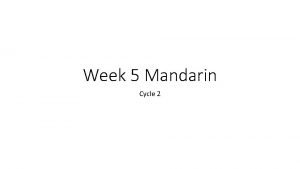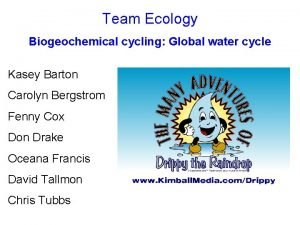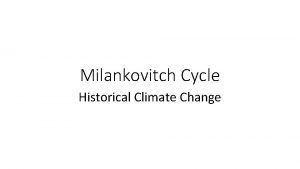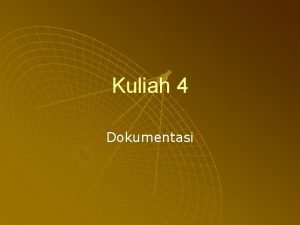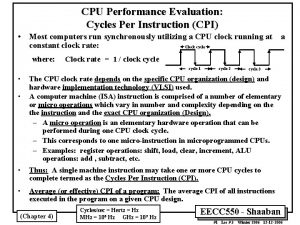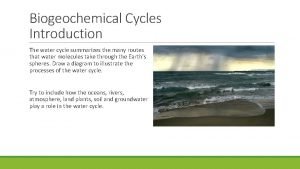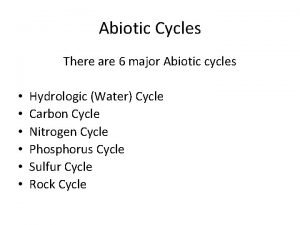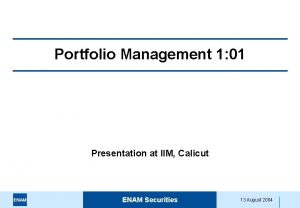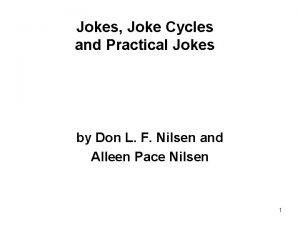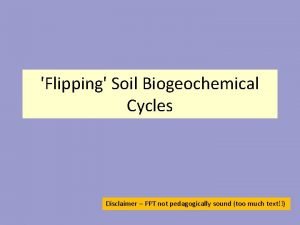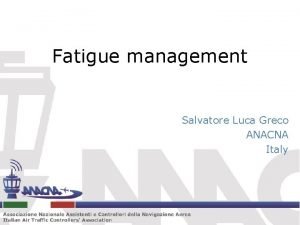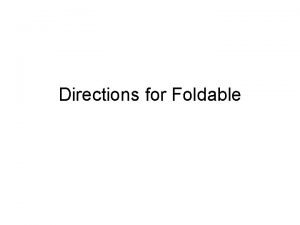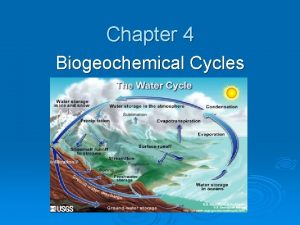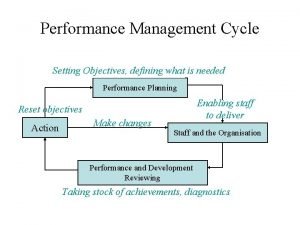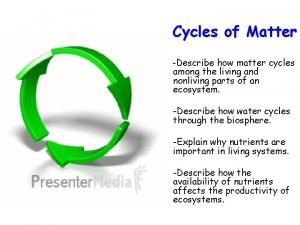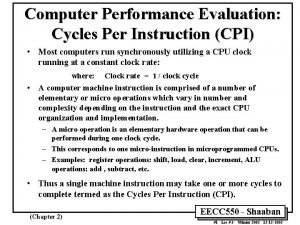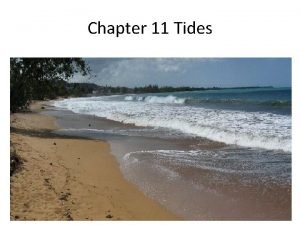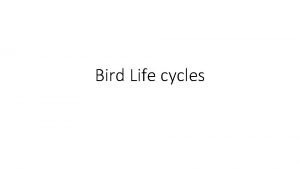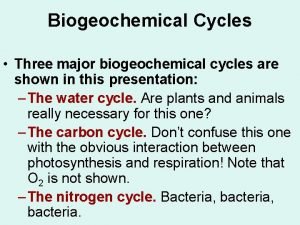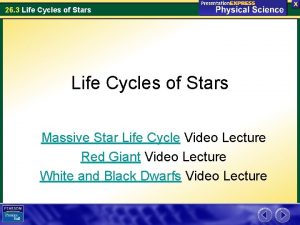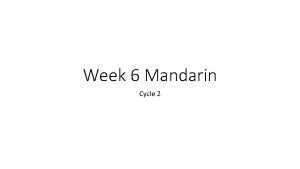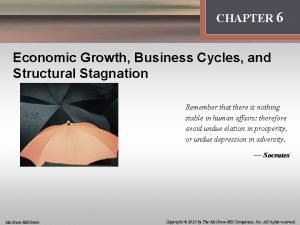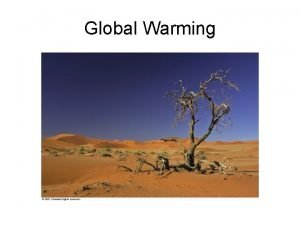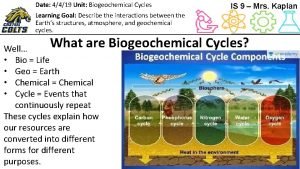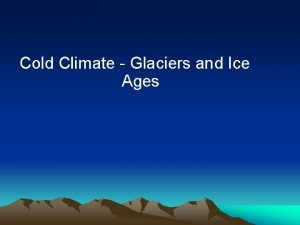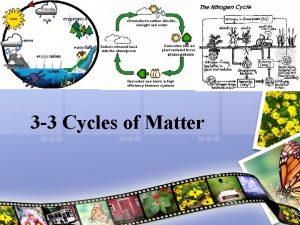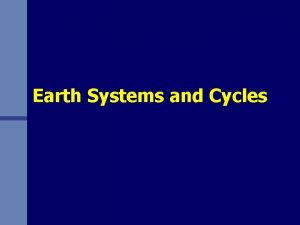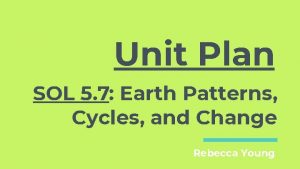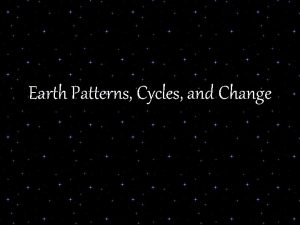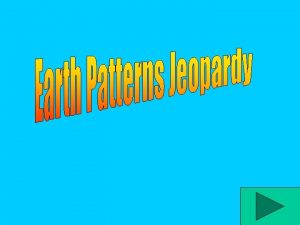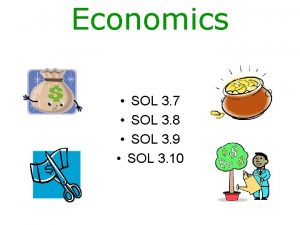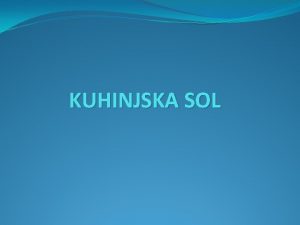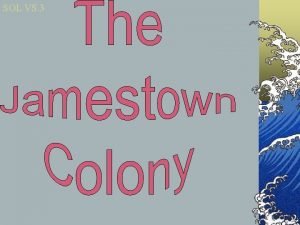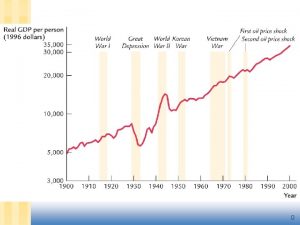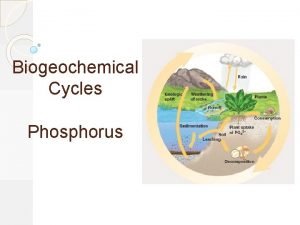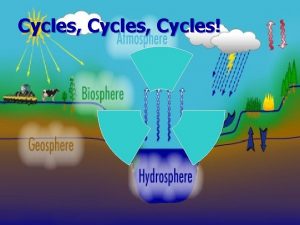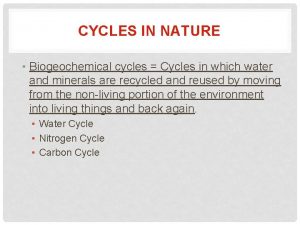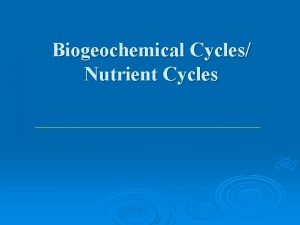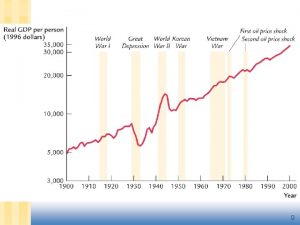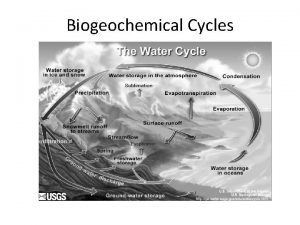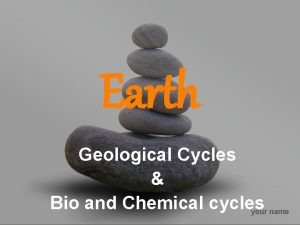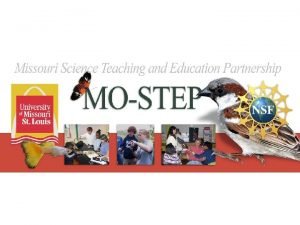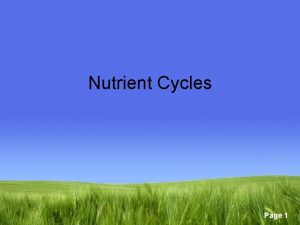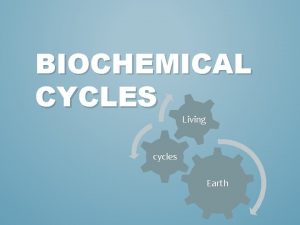Science SOL 5 7 Earth Patterns Cycles and



























































- Slides: 59

Science SOL 5. 7 Earth Patterns, Cycles, and Change Mrs. Scott

The Earth’s Major Layers: • Crust • Mantle • Outer Core • Inner Core

Crust • The rocky surface that includes the continents and the ocean floor. • It is the thinnest layer and is made up of solid rock and covered with loose rock & soil. • It is thickest where mountains are and thinnest where the ocean floor is. • The crust is light and brittle compared to the other layers of the Earth, and most earthquakes occur within the crust. • The crust is always changing slowly due to weathering (breaking down of rocks. )

Crust

Mantle • The layer directly under the crust and above the outer core. • The thickest part of the Earth. • It is made up of hot lava (molten/melted rock) and solid rock. • It can change states of matter depending on the heat and pressure. • The crust floats on top of this layer. • The mantle is rather flexible so it flows instead of cracking or breaking up.

Mantle

Outer Core • The layer directly under the mantle and above the inner core. • It is made up of molten (melted) metal, such as iron and nickel. • It is liquid.

Inner Core • The innermost layer, directly under the outer core. • It is made of very hot metal, including iron and nickel. • It is solid and the hottest layer.

Layers of the Earth Video

Review the Layers

Other important information: • Scientists know these layers exist through the use of technology, including the recording of earthquakes with seismographs. • Because the outer core contains iron, when it flows, it generates a magnetic field. This is the source of the magnetic field on Earth. • The crust is not one huge piece of solid rock. It is made up of very rigid/stiff plates, which are moving at different speeds and sometimes collide.

Plates • Large moving pieces of the Earth’s crust that have broken by upward pressure from the mantle.

Tectonic Plates Video

Plates • Plate boundaries occur where 2 plates meet. • There are 3 different types of boundaries: Convergent, Divergent, and Transform (or strike-slip) • The boundaries are defined by how the plates were formed and how they are moving in relation to each other.

Convergent Boundaries • Plates that move together or merge. • The Rocky Mountains and Himalayas were formed by convergent boundaries. • Mountain ranges, trenches, and volcanos are also formed by convergent boundaries. • To determine what will happen when they meet, you need to look at the 2 types of plates.

Convergent Boundaries • If an oceanic plate and a continental plate collide, one will move under the other and volcanos can form.

Convergent Boundaries • When 2 continental plates come together, both may move upward and form mountains over time.

Divergent Boundaries • These occur along spreading centers where plates are moving apart and new crust is being created by magma pushing up from the mantle. • The Mid-Atlantic Ridge in the Atlantic Ocean is an example of divergent boundaries.

Divergent Boundaries

Transform Boundaries (Strike-Slip) • Occur where 2 plates slide against each other in opposite directions. • This movement is the cause of many earthquakes, such as those along the San Andreas Fault in California.

Earthquakes • The shaking, rolling, or sudden shock of Earth’s surface caused by the movement of the Earth’s plates, usually the sliding of 2 plate boundaries against each other.

Earthquake Video from Nepal April 2015

Seismograph • Instruments used for measuring and recording earthquake energy.

Magnitude • The amount of energy an earthquake releases. • Richter Scale: A scale used to measure the intensity of an earthquake.

Volcanoes • Vents in the surface of the Earth through which magma, gases, and ash erupt. • They are a conical structure that is created by the lava that flows out. • Magma: molten (melted) rock deep in the Earth’s crust. • Lava: magma that has reached the Earth’s surface. V ery hot magma pours O ut onto the surface, changing to L ava as it pours from the C one-shaped mountain A nd then N ew rocks are formed O ver old ones

Volcanic Eruption Video

Continental Drift Theory • The belief that the continents were one large piece of land that broke apart.

Continental Drift Theory Animation Video

Pangaea • The name of the large land mass about 200 million years ago.

How the Earth Changes • Rocks and other materials on the Earth’s surface are constantly being broken down both chemically and physically. • Erosion: the picking up and carrying away of pieces of rock caused by wind, rain, gravity, and other forces of nature. • Deposition: the dropping of sediments. • Weathering: breaking down rocks due to chemical or physical (mechanical) changes. (weathering creates clay, sand, rock fragments, and soluble/dissolvable substances. )

Weathering and Erosion Video

Weathering • There are 2 types of weathering: chemical weathering & physical (mechanical) weathering. • Chemical Weathering: can be caused by acid rain or acids released by some plants causing some of the minerals inside a rock to change. • Physical Weathering: is physically breaking a rock into fragments without changing the chemical makeup of the minerals within it. It changes a rock’s size and shape.

Chemical Weathering • The process that changes the minerals in rocks and a new substance is formed. • Water, oxygen, and acids act on rocks, forming new minerals. • Certain minerals in rocks can rust creating oxides (a material formed when oxygen joins chemically with a mineral. ) • Rain and water combine with carbon dioxide to form weak acid that dissolves limestone creating caves. • When gases combine with rain or snow, the acid eats away at stone and metal buildings. • Humans have some effect on this due to air & water pollution.

Chemical Weathering

Physical (Mechanical) Weathering • The breaking of rocks into smaller pieces (changes the size and shape of the rock. ) • Wind, water, and living things cause physical weathering. • Wind blows dust and sand against rock, wearing it down. • Water that is flowing wears rocks smooth. When water freezes and thaws over time, it will widen cracks in rocks breaking them apart. • Living things such as plants can cause the roots to break rocks apart. • People can also cause physical weathering by building houses, roads, farms, etc.

Physical Weathering

Causes of Erosion • Wind • Streams • Waves • Glaciers

Wind Erosion • Light winds carry fine dust, but heavier winds can carry rocks and pebbles. • Deposition occurs with wind. Dust, rocks, and pebbles are carried from one place, and deposited in another. • Over time, dunes (hills of wind eroded sand) can build up. • Winds carry most of the soil and sand in an area away if there are few plants to hold it down.

Wind Erosion

Stream Erosion • Moving water is the main cause of erosion. • Runoff (water that drains off land) carries away sediment (sand, soil, and small rocks carried by water and wind. ) • The amount of stream erosion depends on 3 things: 1. The steepness of the land. The steeper the land, the faster the water moves, the more the sediment is carried away. 2. The amount of water in a stream. The more water, the more sediment that is carried away. 3. The plants on the land. Roots from grasses, trees, and farm crops hold the soil in place. Planting crops, trees, and grass prevents erosion. Farmers in hilly areas plant rows that go around hills. This is called terrace farming.

Stream Erosion

Terrace Farming

Wave Erosion • Erosion caused by wave movement • Waves carry sand to and away from beaches forming new ones or destroying existing ones. • The force of storm waves can damage shorelines and buildings, especially during hurricanes.

Wave Erosion

Glacier Erosion • A glacier is a large, slow moving mass of ice. • After years of snow and ice build-up, gravity causes these masses of ice to move. As they slide they grind against the land moving rocks and soil. • During the last ice age, the weather warmed and cooled several times. As the ice moved, it weathered mountains and scraped land flat. Valleys and lakes were formed during this time. • 2 Types of glaciers: 1. Sheets of ice that cover thousands of square miles. 2. Mountain glaciers that look like frozen rivers.

Mountain Glaciers

Sheets of Ice Glaciers

Rocks • There are major differences between rocks and minerals. Minerals are made up of one or more elements and rocks are large masses of minerals. • Most rocks consist of 2 or more minerals mixed together. Some have only one type of mineral. • Minerals have characteristics of their own where a rock depends on the minerals in it form, color and other characteristics. • Scientists have collected nearly 2, 000 minerals. Only about 30 are found in large quantities in rocks.

Rocks • Atoms make elements, one or more elements make crystals which make minerals, and minerals are found in rocks. • Rocks move and change over time due to heat and pressure within the Earth and weathering and erosion at the surface. • These and other processes constantly change rock from one type to another which is known as the rock cycle. • Rocks are classified by how they are formed.

3 Rock Types • Igneous • Sedimentary • Metamorphic

3 Rock Types Video

Igneous Rocks • A rock formed when magma from a volcano cools and hardens on Earth’s surface. • Crystals make up minerals and minerals make up rocks. • When magma cools slowly, the crystals are large. • When magma cools quickly, the crystals are small.

Examples of Igneous Rocks • Granite (often used as kitchen countertops. ) • Obsidian

Sedimentary Rocks • A rock formed when tiny particles of older rock or sediments become cemented together. • Sedimentary rocks are gritty, sometimes have visible lines or layers, and can be broken pretty easily. They are usually found near water sources. • Fossils are only found in sedimentary rocks because the dead organism is covered with sediment and then pressed.

Types of Sedimentary Rocks • Limestone Sandstone • Shale Coal

Fossils • Fossils are remains or impressions of organisms (plants or animals) that were buried and formed only in sedimentary rocks. • Tell us that certain organisms existed in a specific location in the past. • Their presence in layers of the earth help scientists determine the history of that area.

Fossil Animation

Metamorphic Rocks • A rock formed when heat and pressure change the minerals in igneous or sedimentary rock (changed by heat & pressure. ) • Examples: Gneiss Slate

Rock Cycle Animation
 Earth science sol 2010
Earth science sol 2010 Earth science sol review
Earth science sol review Earth science final
Earth science final Contoh koloid
Contoh koloid Design science research cycles
Design science research cycles Water cycle pearson education
Water cycle pearson education Rvguev death
Rvguev death Complete my favourite subject is
Complete my favourite subject is Eclat algorithm
Eclat algorithm Compare and contrast carbon and nitrogen cycles
Compare and contrast carbon and nitrogen cycles Big idea 7 earth systems and patterns answer key
Big idea 7 earth systems and patterns answer key Big idea 7 earth systems and patterns
Big idea 7 earth systems and patterns Dating serves several important functions that include
Dating serves several important functions that include Stockspotter
Stockspotter Fadlife
Fadlife Plant life cycles and alternation of generations
Plant life cycles and alternation of generations Metaphase ii
Metaphase ii Chapter 13 meiosis and sexual life cycles
Chapter 13 meiosis and sexual life cycles Earth science reference table page 8 and 9
Earth science reference table page 8 and 9 Space definition science
Space definition science Mandarin cycles
Mandarin cycles My tippet only tulle
My tippet only tulle Importance of water cycle
Importance of water cycle Pdsa cycle nursing
Pdsa cycle nursing Precession milankovitch cycles
Precession milankovitch cycles Relationship between transaction cycles
Relationship between transaction cycles Cpi cycles per instruction
Cpi cycles per instruction Biogeochemical cycles performance task
Biogeochemical cycles performance task Apes nutrient cycles
Apes nutrient cycles Abiotic cycles
Abiotic cycles Biogeochemical cycles quiz
Biogeochemical cycles quiz Enam securities portfolio
Enam securities portfolio Joke cycles
Joke cycles Joke cycles
Joke cycles Biogeochemical cycles class 9 ppt
Biogeochemical cycles class 9 ppt Fatigue risk assessment matrix
Fatigue risk assessment matrix Biogeochemical cycles foldable
Biogeochemical cycles foldable Biogeochemical cycles poster
Biogeochemical cycles poster Pdsa cycles
Pdsa cycles Poster alfons mucha
Poster alfons mucha Performance management cycles
Performance management cycles Water cycles of matter
Water cycles of matter Isagenix presidents pack
Isagenix presidents pack Multiplication of cycles
Multiplication of cycles Cycles per instruction
Cycles per instruction Tidal patterns
Tidal patterns Life cycle of a bird
Life cycle of a bird 4 major biogeochemical cycles
4 major biogeochemical cycles Life cycle of a star assessment
Life cycle of a star assessment Mandarin cycles
Mandarin cycles Tsw cycles
Tsw cycles Business cycles economics
Business cycles economics Per capita real gdp formula
Per capita real gdp formula Paragraph on global warming
Paragraph on global warming End-to-end procurement life cycle
End-to-end procurement life cycle Biogeochemical cycles
Biogeochemical cycles Rolling thunder cycles
Rolling thunder cycles Milankovitch cycles
Milankovitch cycles Milankovitch cycle
Milankovitch cycle 3-3 cycles of matter
3-3 cycles of matter
